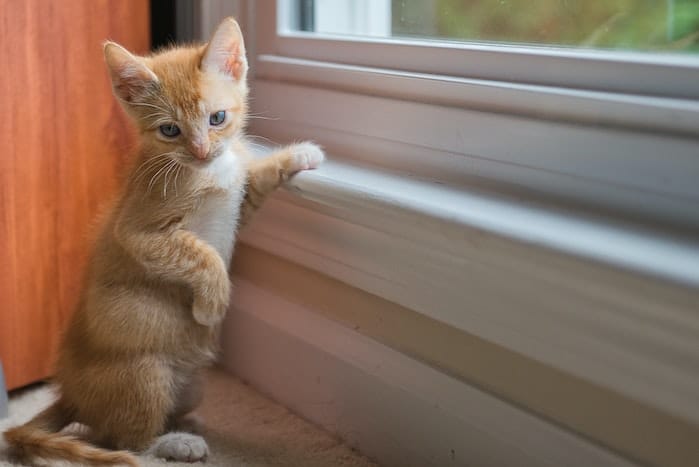Disciplining a cat is a tricky business, and as a pet owner, it can be challenging to know where to draw the line between acceptable behavior and unacceptable behavior. While it’s important to establish boundaries and set expectations for your cat’s behavior, it’s equally essential to discipline them in a humane and gentle way that doesn’t damage your relationship with your furry friend.
How to discipline a cat:
- Understand your cat’s behavior and address underlying issues
- Redirect negative behavior by providing acceptable solutions for the type of behavior
- Use positive reinforcement like cat treats and affection
- Set clear boundaries to create routines and structure
- Avoid punishment as it can build fear and distrust in your cat

Understand Your Cat’s Behavior
The first step in disciplining your cat is to understand their behavior. Cats are intelligent creatures that have their own unique personalities and preferences. They have specific ways of communicating their needs and desires, and it’s up to us as pet owners to understand and interpret their behavior.
For example, cats may exhibit behavior such as scratching or biting when they are feeling anxious or stressed. By identifying the root cause of this behavior, we can take steps to address the underlying issue rather than just punishing the cat for their actions.
Redirect Negative Behavior
One of the most effective ways to discipline a cat is to redirect their negative behavior. For example, if your cat is scratching your furniture, provide them with an appropriate scratching post and encourage them to use it by placing it in a prominent location and rewarding them with treats or praise when they use it.
Similarly, if your cat is jumping on counters or other surfaces, provide them with an alternative space where they can climb and explore, such as a cat tree or shelf. By redirecting their behavior in a positive way, you can discourage negative behavior without resorting to punishment.

Use Positive Reinforcement
Positive reinforcement is a powerful tool for disciplining cats. By rewarding good behavior with treats, praise, or affection, you can encourage your cat to repeat positive behavior and discourage negative behavior.
For example, if your cat is using their litter box consistently, reward them with a treat or some extra playtime. Similarly, if your cat is exhibiting good behavior such as sitting quietly, offer them a treat or some affection as a reward.
Set Clear Boundaries
Setting clear boundaries is essential when disciplining a cat. Cats thrive on routine and structure, and by setting clear expectations for their behavior, you can help them understand what is expected of them.
For example, if you don’t want your cat to jump on the kitchen counters, make sure that they have an alternative space where they can climb and explore, such as a cat tree or shelf. Consistently reinforce this boundary by gently removing your cat from the counter and redirecting them to their designated space.

Avoid Punishment
Physical punishment is never an effective or humane way to discipline a cat. Not only does it damage your relationship with your cat, but it can also lead to aggressive or fearful behavior.
Instead of punishing your cat, focus on positive reinforcement and redirection. Remember that cats respond best to gentle, positive reinforcement and that punishment only serves to reinforce negative behavior.
Conclusion
Disciplining a cat can be a challenging task, but by understanding your cat’s behavior, redirecting negative behavior, using positive reinforcement, setting clear boundaries, and avoiding punishment, you can create a happy and healthy environment for your furry friend. Always remember that disciplining a cat should be done in a humane and gentle way that reinforces positive behavior and strengthens your bond with your furry friend.
Related Reading
Reviewed by: Tim Winter

Tim Winter has dedicated his writing and research efforts to animals and wildlife. He explores the globe and sees firsthand the negative impact humans have on the environment. Tim is dedicated to promoting responsible environmental stewardship. He holds a Bachelor of Science in Advertising from the University of Oregon School of Journalism and Communications.
